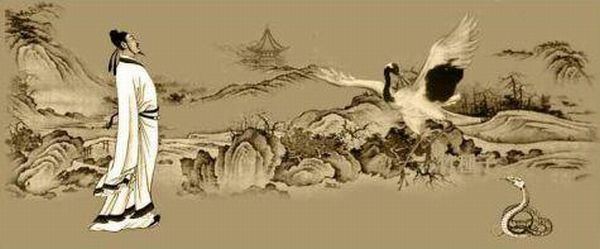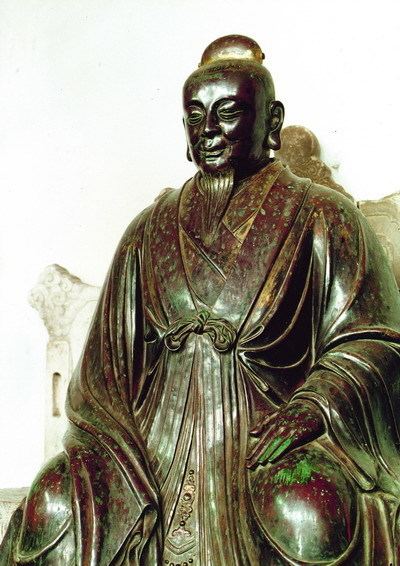Education Shaolin Monastery Notable students 13 students | Style Neijia | |
 | ||
Similar Chen Fake, Wong Fei hung, Yang Luchan | ||
Zhang sanfeng founder of tai chi chuan
Zhang Sanfeng was a legendary Chinese Taoist purported to have achieved immortality. According to various accounts, he was born in Shaowu, Nanping, Fujian during the Southern Song dynasty and lived for over 200 years until the mid-Ming dynasty. His given name was Tong (通) and his courtesy name was Junbao (君寶). He specialised in Confucian and Taoist studies, scholarly and literary arts. During the reign of Emperor Shizu in the Yuan dynasty, he was nominated as a candidate to join the civil service and held office as the Magistrate of Boling County (博陵縣; around present-day Dingzhou, Baoding, Hebei). While touring around the mountainous regions near present-day Baoji, Shaanxi, he saw the summits of three mountains and decided to give himself the Taoist name "Sanfengzi" (三丰子), hence he also became known as "Zhang Sanfeng".
Contents

Zhang Sanfeng's life is that of indifference to fame and wealth. After declining to serve the government and giving away his property to his clan, he travelled around China and lived as an ascetic. He spent several years on Mount Hua before settling in the Wudang Mountains.
Legend

Zhang Sanfeng is purported as having created the concept of neijia (內家) in Chinese martial arts, specifically taijiquan, a Neo-Confucian syncretism of Shaolin martial arts with his mastery of daoyin (or neigong) principles. On one occasion, he observed a bird attacking a snake and was greatly inspired by the snake's defensive tactics. It remained still and alert in the face of the bird's onslaught until it made a lunge and fatally bit its attacker. This incident inspired him to create a set of 72 taijiquan movements. He is also associated with the Taoist monasteries in the Wudang Mountains.

Huang Zongxi's Epitaph for Wang Zhengnan (1669) gave Zhang Sanfeng credit for the development of a Taoist "internal martial arts" style, as opposed to the "external" style of the Shaolin martial arts tradition. Stanley Henning's article, Ignorance, Legend and Taijiquan, criticised the myth that Zhang Sanfeng created taijiquan and cast doubt on whether Zhang really existed.
Zhang Sanfeng was also an expert in the White Crane and Snake styles of Chinese martial arts, and in the use of the jian (double-edged Chinese sword). According to 19th century documents preserved in the archives of the Yang and Wu-styles taijiquan families, Zhang Sanfeng's master was Xu Xuanping, a Tang dynasty Taoist poet and daoyin expert. The taijiquan families who honour Zhang Sanfeng as the creator of taijiquan traditionally celebrate his birthday on the ninth day of the third month in the Chinese calendar.
Writings
Writings attributed to Zhang Sanfeng include the Da Dao Lun (大道論), Xuanji Zhi Jiang (玄機直講), Xuan Tan Quanji (玄譚全集), Xuan Yao Pian (玄要篇), Wu Gen Shu Ci (無根樹詞) and others. These were compiled into a collection known as The Complete Collection of Mr Zhang Sanfeng (張三丰先生全集), which is found in Dao Zang Ji Yao (道藏輯要), a series of Taoist texts compiled by Peng Dingqiu (彭定求) in the early Qing dynasty. It also contained introductory notes on Taoist martial arts and music.
In folktales, fiction and media
Owing to his legendary status, Zhang Sanfeng's name appears in Chinese wuxia novels, films and television series as a spiritual teacher and martial arts master and monk.. Zhang Sanfeng's popularity among the Chinese is also attributed to his personality and association with Confucianism and Taoism. The best known depiction of Zhang Sanfeng in fiction is probably in Jin Yong's wuxia novel The Heaven Sword and Dragon Saber, which is primarily set in the final years of the Yuan dynasty. In the novel, Zhang Sanfeng is a former Shaolin monk who founded the Wudang Sect based in the Wudang Mountains. He has seven apprentices, the "Seven Heroes of Wudang", one of whom is the father of the novel's protagonist, Zhang Wuji. According to many regional gazettes, Zhang Sanfeng was still alive in the reign of the Tianshun Emperor (r. 1457–1464) in the Ming dynasty, having lived for more than 200 years.
Notable actors have portrayed Zhang Sanfeng in film and television. Jet Li starred as a young Zhang Sanfeng in the 1993 film Tai Chi Master (1993). Sammo Hung appeared as Zhang Sanfeng in Kung Fu Cult Master, a 1993 film loosely adapted from The Heaven Sword and Dragon Saber and which starred Jet Li as Zhang Wuji. Yu Chenghui also portrayed Zhang Sanfeng in the 2009 television series adaptation of The Heaven Sword and Dragon Saber. He is also in many other movies.
